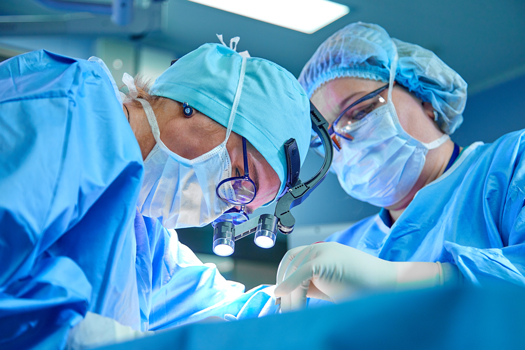
A microdiscectomy may be recommended if pain from a herniated disc is severe or not responding and improving with conservative treatments after several months. In fact, many patients report positive long-term results from this procedure. There is some degree of initial discomfort during the healing and recovery period, which usually goes away as recovery continues. This article explains the levels of pain that may be expected with a microdiscectomy.
There Is No Pain during the Procedure
The actual microdiscectomy procedure is not painful at all. This is typically true with both general and localized anesthesia. The incisions used for a microdiscectomy are smaller than those made during a regular discectomy, further minimizing discomfort related to the procedure. You may notice some pain once the anesthesia wears off, although this can usually be managed with medication.
Initial Post-Surgery Pain Is Usually Considered Normal
It is not unusual to experience a mix of pain, fatigue, and excessive sleepiness during the first few days after a microdiscectomy. This is why stronger pain medications are often prescribed for short-term use after the patient is released from the hospital or surgery center. Minimize this initial discomfort by carefully adhering to post-surgery instructions, which often include reminders to:
• Properly check and care for the incision site
• Take baths or showers as directed
• Be mindful of initial activity restrictions
• Walk at a comfortable pace to increase circulation and strengthen spine-supporting muscles
Pain Should Steadily Ease and Go Away as You Recover
By the time you get through the first week after having a microdiscectomy, the pain should be much less noticeable. The light activities patients are typically encouraged to engage in during this period also help with tissue healing. Light activities and physical therapy exercises also strengthen muscles around the spine, which further eases stress in the affected area.
Once you get a month or so beyond your surgery, discomfort should not be much of an issue. By six weeks or so post-surgery, most activities can be safely resumed without significant pain. However, you should continue to keep activity limitations in mind. For instance, if you have a physically demanding job, you may need to wait longer before being able to safely resume all occupation-related tasks.
There Are Various Ways to Handle Post-Microdiscectomy Pain
Some microdiscectomy patients have mild discomfort beyond the initial post-surgery healing period. If pain is noticed beyond the first few weeks, it may be related to an uptick in your activity level as you recover or a sign you may be pushing yourself a bit too much while recovering. In addition to using medication with doctor approval, patients are often advised to take the following steps to manage or avoid post-microdiscectomy pain:
• Applying heat or cold to the affected area
• Using a cushion for back support
• Getting help with more demanding tasks
• Sticking to recommend physical therapy routines
• Avoiding excessive bending, twisting, or reaching
• Reporting any unusual pain or sudden pain spikes
Pain levels and back surgery recovery time vary among individuals and depend on factors such as disc height and the size of the hole left in the outer ring of the disc after surgery. If the hole in the disc is larger than a standard pencil eraser, the patient has a significant risk of reherniation. Patients with a large hole in the outer ring of the disc are more than twice as likely to reherniate after surgery. These reherniations often require additional surgery or even a larger spinal fusion operation. Barricaid is a bone-anchored device shown to reduce reherniations by closing the hole in the disc after a microdiscectomy, and 95 percent of Barricaid patients did not undergo a reoperation due to reherniation in a 2-year study timeframe. This treatment is done immediately following the discectomy—during the same operation—and does not require any additional incisions or time in the hospital.
If you have any questions about the Barricaid treatment or how to get access to Barricaid, you may ask your doctor or contact us at 844-288-7474.
For full benefit/risk information, please visit: https://www.barricaid.com/instructions.


Comments